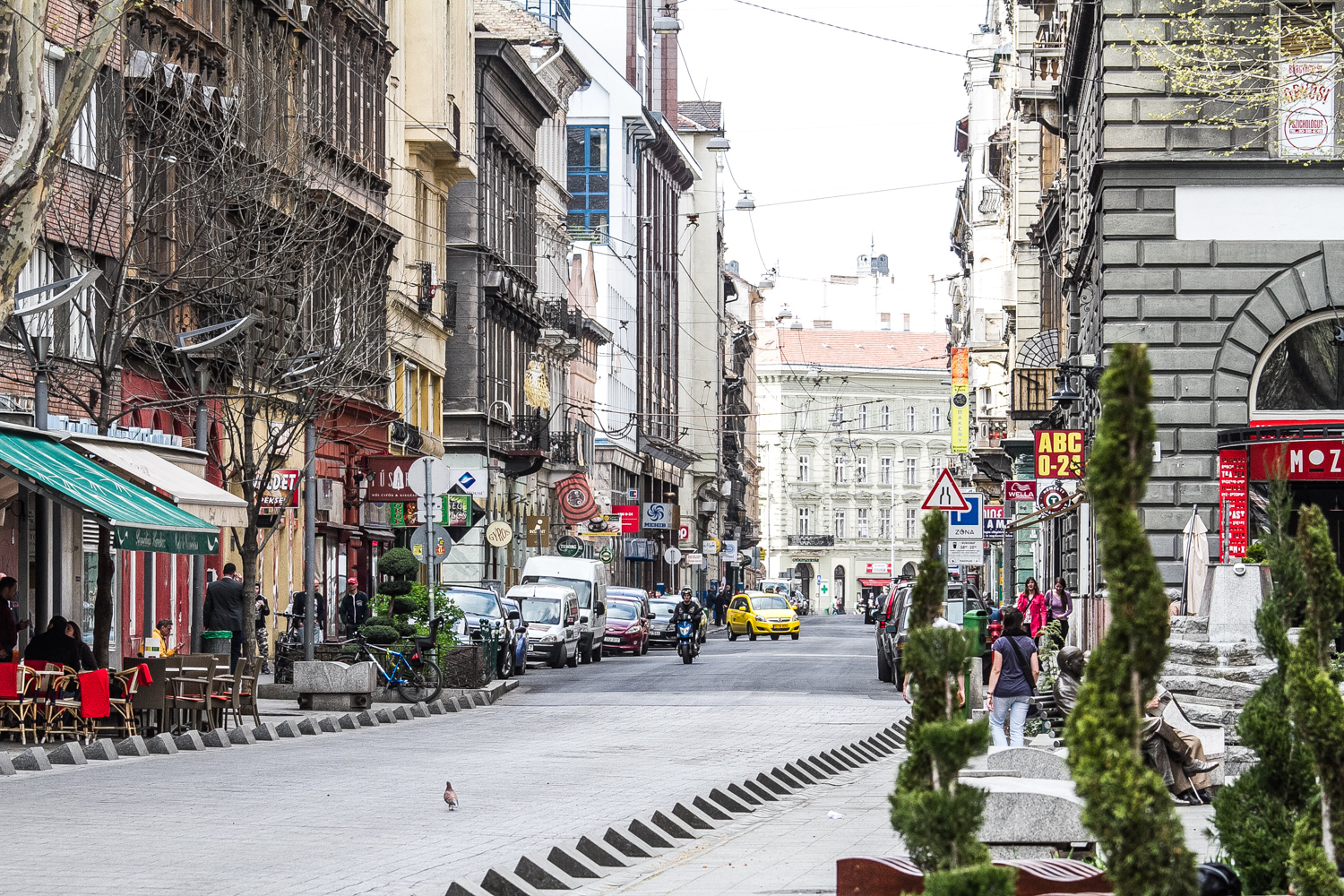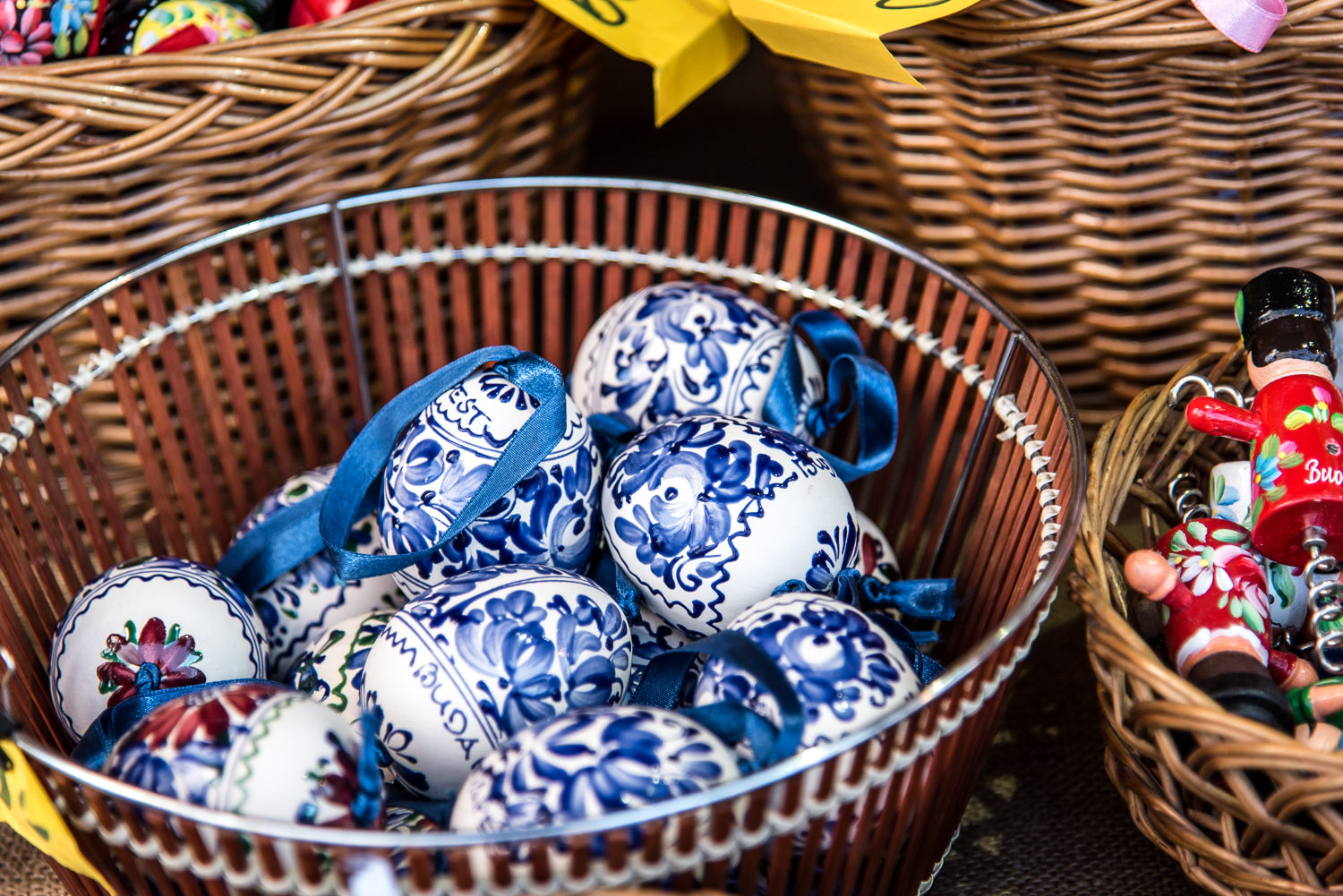Today the overflow of District VII bar life washes over the doorstep of Nagymező Street, more grandly announced by Teresa of Avila Parish Church, constructed through the 1800s. Its spire was the work of Miklós Ybl of nearby Opera House fame. Across the street, the Robert Capa Center was opened in honor of the legendary photographer of the same name in 2013. This was formerly the Ernst Museum, named after the indebted art lover forced to sell back his collection to the Hungarian State before commiting suicide in 1937. After acquiring a cache of pictures by renowned war photographer Capa, who fled Budapest to seek his fortune in 1920s’ Paris, this gallery was set up to showcase modern and contemporary works.

After quality coffee at the bistro-like Két Szerecsen, cross showcase boulevard Andrássy onto the stretch of sidewalk that makes Nagymező Nagymező. Footprints lead the way ahead of you, each belonging to a Magyar star of stage or screen. Some are still with us – lyric soprano Andrea Rost, actor and producer András Kern – while others are still mourned, such genial character actor Dezső Garas.

Overseeing this walk of fame, in characteristic recline with trademark cigar in hand, is a likeness of composer Emmerich Kálmán, whose works are performed at the ornate Operetta Theater that stands right here. That rara avis, a Jewish favorite of Adolf Hitler, Kálmán studied music with Béla Bartók before moving into light opera. He was responsible for that equal rarity, a worldwide operetta hit, the ‘Gay Hussars’, taking this Central European genre to the wider world. Kálmán managed to escape to California in 1940.
At this time, while Hungary remained officially neutral, the Operetta Theater was in full swing. Across Nagymező at number 20, the notorious Arizona cabaret was welcoming diplomats, sheikhs and spies, entertained by exotic dancing girls, accompanied by the piano tunes of later world star György Cziffra. As 1940 turned into 1941, the audience began to number ever more uniformed Germans. With Jewish cabaret owner Sándor Rozsnyai taken away, his wife Mici (aka Miss Arizona) paid 100,000 pengő to the authorities to spring him from captivity. One December night in 1944, pengő, gold or diamonds were not enough, and Rozsnyai was taken away for good.

After it closed down, the Arizona was conveniently forgotten about until its legend was revived in a 1988 Italian-Hungarian film starring Marcello Mastroianni. Today the building is occupied by the Hungarian House of Photography, also named Mai Manó, after the Royal Court photographer who used this as his house-studio in the Habsburg days. A century later, it was beautifully restored and returned to its original purpose of photography, staging exhibitions such as the current one of works by mysterious nanny-cum-snapper Vivian Maier. Its arty street-level cafe is equally popular.

After a glimpse at the striking façade of the renowned Thália Theater, with its statue outside of revered humorist Géza Hofi with Hamlet’s ghost, it’s time for lunch. Alongside the Operetta Theater, Pesti Disznó specializes in classic Hungarian cuisine, albeit in more bistro style. Look out on the menu for dishes featuring prime Hungarian mangalica pork, a successfully revived breed in these parts.

Other lunch options abound nearby – creative pizza at Pizzica, quality mains at Mozsár – as Nagymező fizzles out into non-descript businesses and sadly seedy faux sex bars.

Holding out against this grim tide, slap opposite a tattoo parlor, artisanal bakers Kiskovász and urban burger joint Meat & Sauce, Grünberger has been making chandeliers since 1901. Still open three afternoons a week, the Grünberger chandelier dynasty prepares ornate interior decor for institutions and ministries. Having survived the global economic collapse of the 1920s, World War II, 1956 and Communism, long may it shine.




